Date and time
2Choose a doctor
3Make an appointment
Date and time
2Choose a doctor
3Make an appointment
WORK ON CONDUCTING A SEROLOGICAL STUDY TO DETECT HBSAG AMONG SCHOOLCHILDREN 7-9 YEARS OLD
Preparatory work was carried out with WHO and CDC representatives to conduct HBsAg serological testing among schoolchildren aged 7-9. In May, trainings and fieldwork were conducted in selected schools.
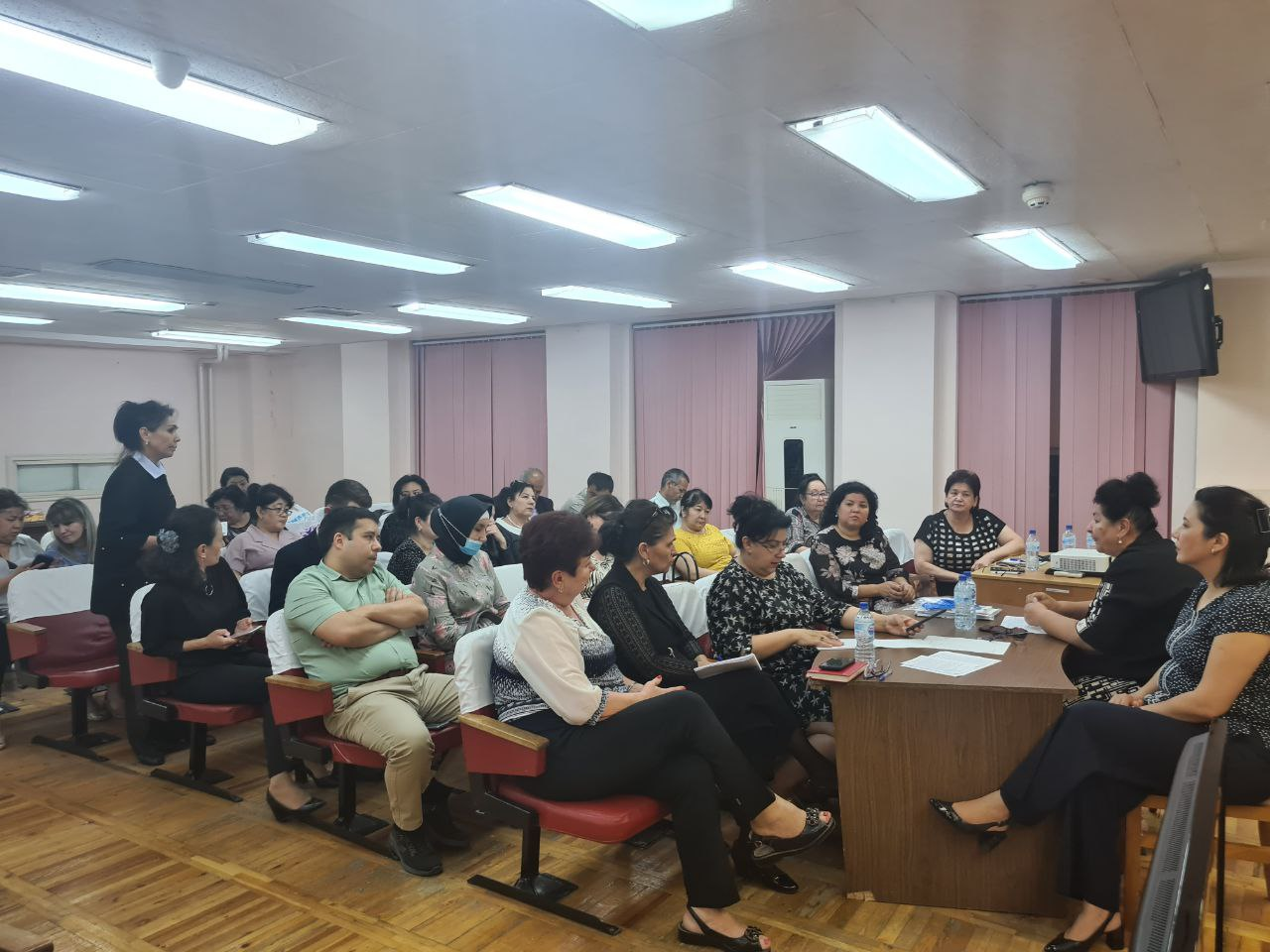
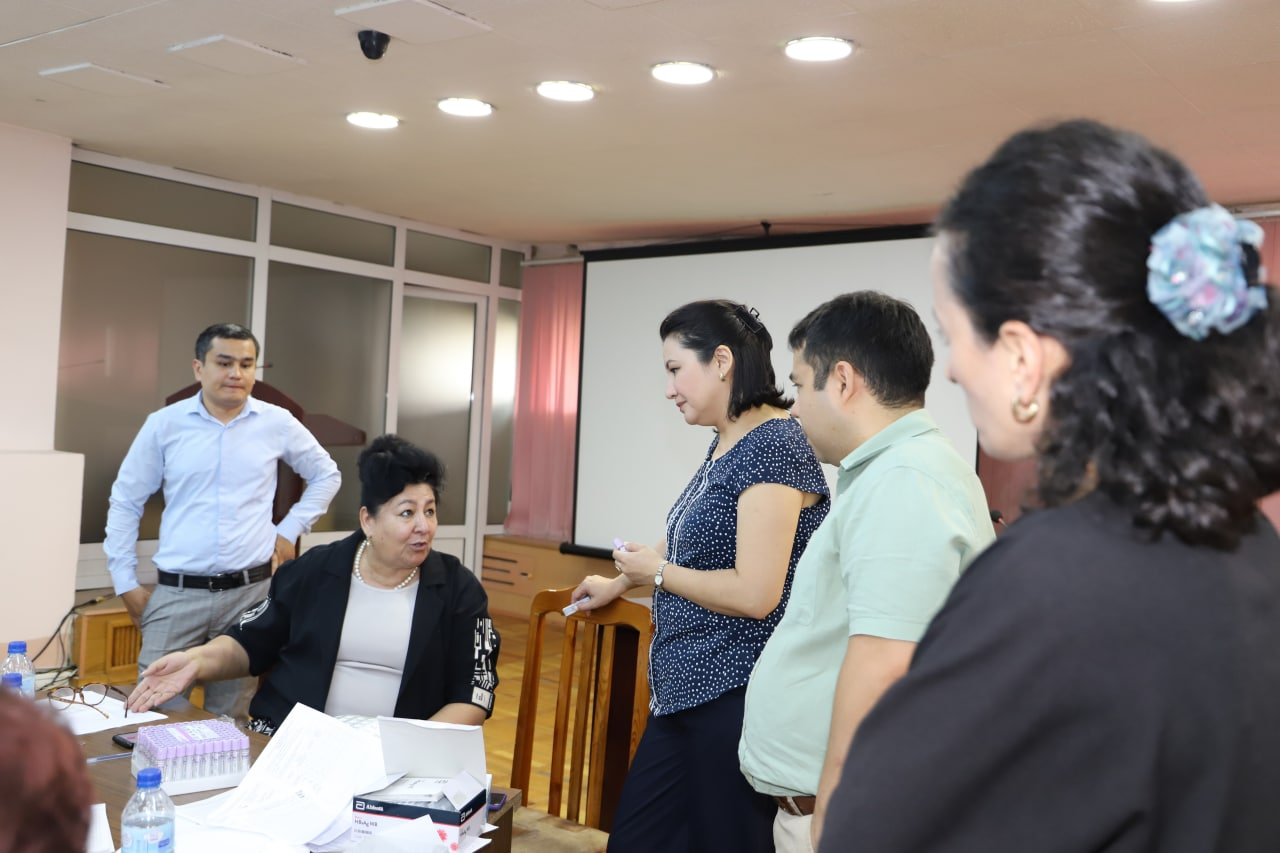
Text: Risolat Madieva
Despite the high prevalence of the disease, most people infected with hepatitis B and C viruses are unaware that they are infected.
As a result, hepatitis leads to complications such as cirrhosis of the liver and liver cancer.
For the purpose of early diagnosis and treatment of hepatitis, the Institute of Virology together with the Ministry of Health of the Republic of Uzbekistan conducts free screening of the population.
Currently, free screening processes are underway at the central family clinics in Tashkent and 6 regions of the country.
In polyclinics in Tashkent:
1. Central polyclinic of Shayhantahur district
2. Central polyclinic of Chilanzar district
3. Central polyclinic of Uchtepa district
4. Central polyclinic of Almazar district
5. Family polyclinic No. 8 of Mirzo-Ulugbek district
6. Family polyclinic No. 30 of Yashnabad district
For the following regions of the republic:
1. Samarkand region: in 2,4,9,12 family polyclinics
2. Surkhandarya region: in 1,2,3,4-family polyclinics
3. Syrdarya region: Mirzarabad, Gulistan, Yangier - in family clinics
4. Andijan region: in 1,2,3,4-family polyclinics
5. Namangan region: in 1,3,9,10 family polyclinics
6. Fergana region: 1,4,5,6 - in family clinics
Remember to go through the check.
NOW IT WILL BE POSSIBLE TO CONTROL HEPATITIS
Results of screening for early diagnosis of hepatitis B and C types in the Republic of Uzbekistan (as of August 1, 2022)
|
Regions |
Total number of tests performed |
|
Andijan region |
35300 |
|
Bukhara region |
684 |
|
Jizzakh region |
2993 |
|
Navoi region |
1082 |
|
Namangan region |
36264 |
|
Samarkand region |
48620 |
|
Syrdarya region |
12829 |
|
Surkhandarya region |
42816 |
|
Ferghana region |
38946 |
|
Khorezm region |
200 |
|
Kashkadarya region |
5200 |
|
Republic of Karakalpakstan |
200 |
|
Tashkent region |
6036 |
|
Tashkent |
61539 |
|
Total |
292709 |
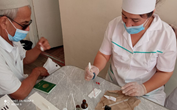
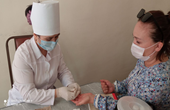
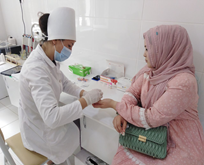
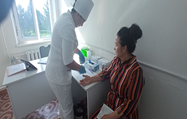
Sog‘liqni saqlash vazirligi, Sanitariya-epidemiologik osoyishtalik va jamoat salomatligi xizmati va RIEMYUPKIATM Virusologiya ilmiy- tadqiqot instituti hamkorlikda quyidagi oilaviy poliklinikalarda virusli gepatitning “В” va “С” turlarini erta aniqlash uchun bepul skrining tadbirlari o‘tkazmoqda:
Toshkent shahri:
Shayxontohur tuman markaziy poliklinikasi;
Chilonzor tuman markaziy poliklinikasi;
Uchtepa tuman markaziy poliklinikasi;
Olmazor tuman markaziy poliklinikasi;
Mirzo Ulug‘bek tumanidagi 8-sonli oilaviy poliklinikasi;
Yashnobod tumanidagi 30-sonli oilaviy poliklinikasi.
Andijon viloyati:
Andijon shahar 1-, 2-, 3 va 4-sonli oilaviy poliklinikalar.
Buxoro viloyati:
Buxoro shahar 4-, 5 va 11-sonli oilaviy poliklinikalar;
Gʻijduvon tuman ko‘p tarmoqli markaziy poliklinika.
Jizzax viloyati:
Jizzax shahar 1-, 2-, 3-, 4 va 5-sonli oilaviy poliklinikalar.
Qashqadaryo viloyati:
Qarshi shahar ko‘p tarmoqli markaziy poliklinika;
Qarshi shahar 4-, 5 va 6-sonli oilaviy poliklinika;
Chiroqchi tuman ko‘p tarmoqli markaziy poliklinika.
Navoiy viloyati:
Navoiy shahar 1-, 2-, 3 va 4-sonli oilaviy poliklinikalar.
Namangan viloyati:
Namangan shahar 1-, 3-, 9 va 10-sonli oilaviy poliklinikalar.
Samarqand viloyati:
Samarqand shahar 2-, 4-, 9 va 12-sonli oilaviy poliklinikalar.
Surxondaryo viloyati:
Termiz shahar 1-, 2-, 3-, 4 va 5-sonli oilaviy poliklinikalar.
Sirdaryo viloyati:
Sirdaryo tuman ko‘p tarmoqli markaziy poliklinika;
Mirzabod tuman ko‘p tarmoqli markaziy poliklinika;
Yangiyer shahar ko‘p tarmoqli markaziy poliklinika;
Guliston shahar 2 va 4-sonli oilaviy poliklinikalari;
Toshkent viloyati:
Yuqori Chirchiq tuman ko‘p tarmoqli markaziy poliklinika, 66 va 67-sonli oilaviy poliklinikalar.
Saksonota oilaviy shifokor punkti.
Farg‘ona viloyati:
Farg‘ona shahar 1-, 4-, 5 va 6-sonli oilaviy poliklinikalar.
Xorazm viloyati:
Urganch shahar ko‘p tarmoqli markaziy poliklinika hamda 1-, 2 va 3-sonli oilaviy poliklinikalar.
Qoraqalpog‘iston Respublikasi:
Nukus shahar 1-,3-, 5 va 6 sonli oilaviy poliklinikalar.
Shunday imkoniyatdan foydalanib qoling!
Bepul tekshiruvlardan o‘z vaqtida o‘tib oling!
Sanepidxizmat
Matbuot xizmati
▶️@sanepidxizmat
The Ministry of Health, the Sanitary Epidemiological Service of the World and Public Health and the Research Institute of Virology jointly conduct free screening tests for early detection of viral hepatitis "B" and "C" in family polyclinics
Citizens with hepatitis C are treated with free drugs
EARLY DETECTION OF VIRAL HEPATITIS B AND C AMONG THE POPULATION
Presidential Decree No. 243" On improving measures to combat the spread of certain viral infections" was adopted on 16 May 2022.
Early detection of viral hepatitis B and C among the population is one of the main directions indicated in the decree, and screening examinations are being carried out in all regions of our country in order to diagnose these diseases. Patients diagnosed with viral hepatitis C are provided with antiviral drugs free of charge. On the one hand, the hepatitis C virus, known as the "gentle killer", is eliminated from the body, i.e. by eliminating the virus, cirrhosis and liver cancer, which are often fatal complications of the disease, are prevented.
One of the main areas of the solution is a comprehensive vaccination against hepatitis B in persons, including health workers who come in contact with blood and its components, which ensures the prevention of transmission of the disease to health workers.
Inclusion in a single electronic register of viral hepatitis detected in all medical and preventive institutions, the Service of Sanitary-Epidemiological Welfare and Public Health and non-state medical organizations, along with determining the level of spread of the disease among the population, monitoring the health status of patients with this disease by not one but several specialists, timely treatment of patients is the only effective measure to prevent severe complications of the disease.
In the decision it is necessary to provide the primary level of medicine with the necessary test-systems for detection of viral infections, strengthening of control over safety and high efficiency of medicines and vaccines produced in our country and imported from abroad for human health that is one of the important directions in the protection of human health.
On the improvement of scientific research on viral infections, specific tasks on the implementation of evidence-based diagnosis, treatment and prevention have been identified.
It is important to carry out widespread educational work among the population on measures to prevent the transmission of viral infections, observing the requirements of a healthy lifestyle.
Why hepatitis C is called a 'gentle killer' - interview with a virologist
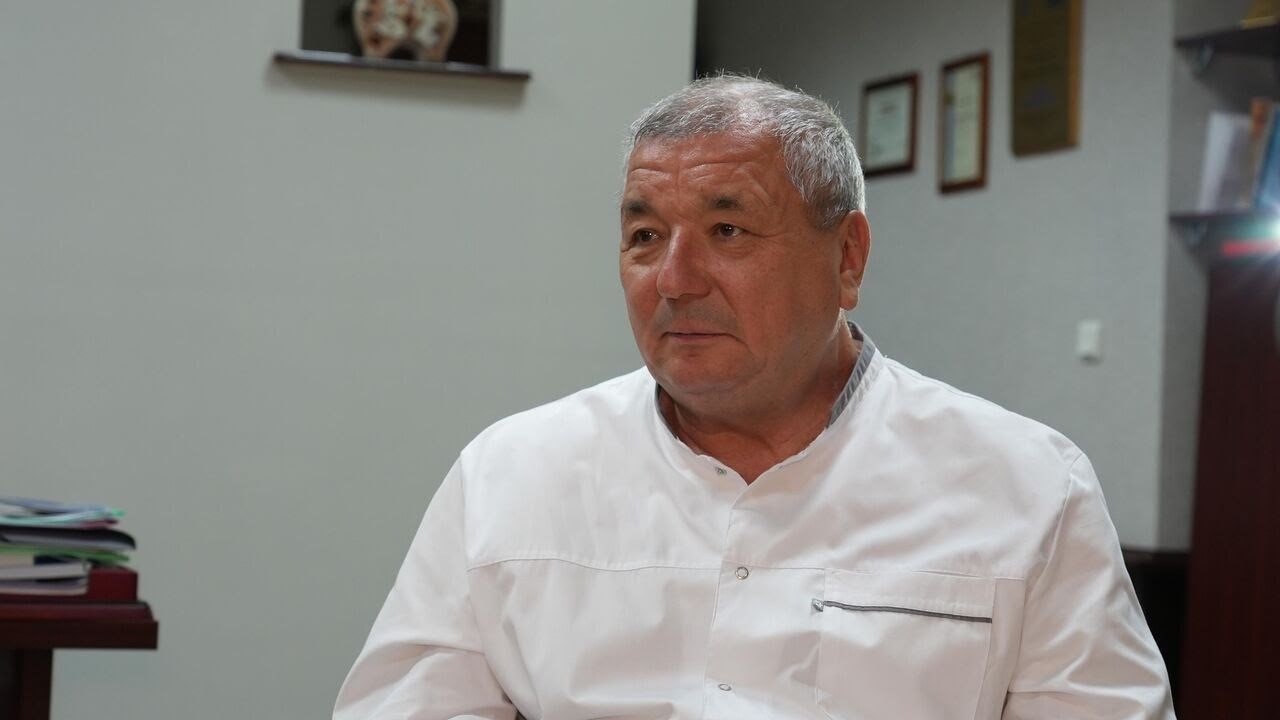
Complications of hepatitis C can persist in the liver for 25 years and cause cancer or diabetes - virologist.
In 2021, Uzbekistan launched the National Program for the Elimination of Viral Hepatitis C (HCV). The program aims to eliminate HCV cases in the country by 2030. Egypt is helping Uzbekistan in this regard by supplying antiviral drugs.
Between 2023 and 2024, about 5 million people across Uzbekistan are scheduled to undergo medical screening for viral hepatitis C and B types. About 140,000 patients are receiving treatment.
Erkin Musabayev, director of the Institute of Virology of the Ministry of Health of the Republic of Uzbekistan, told a Sputnik correspondent how dangerous HCV is, what kind of people it usually infects and in what cases the disease is difficult to treat.
- Erkin Isakovich, what is the danger of viral hepatitis C?
- Not for nothing this disease is called "tender killer", because even 20-25 years after the disease the patient may not know that his liver is affected. Liver cirrhosis may begin, and it may progress to cancer, or cancer may develop initially. This is a serious complication of the disease that runs without any clinical manifestations.
- Are there any warning signs?
- There are no obvious signs. This is the complexity of the disease and the dangerous nature of the disease. But there are symptoms that require serious attention - chronic fatigue, anemia (for example, nails begin to crumble), liver failure, increased, in particular,
- Maybe there are some warning signs?
- There are no obvious signs. This is the complexity of the disease and the dangerous nature of the disease. But there are symptoms that require serious attention - chronic fatigue, anemia (for example, nails start to crumble), liver failure, bilirubin, ALT and AST, in particular, increase.
- How many people are infected with hepatitis C in Uzbekistan?
- According to our data, only 10% of patients are aware of their disease, about 3% of the adult population of Uzbekistan are carriers of hepatitis C virus. This is about 600,000 patients. However, 85,000 patients have been treated and cured.
- How are hepatitis C patients treated? Is diagnosis and treatment paid for?
- Viral hepatitis C is treatable. Today, diagnosis and treatment of patients is carried out at the expense of the state. At regional infectious diseases hospitals there are regional hepatology centers.
Drugs for treatment of hepatitis C - Daclatasvir and Sofosbuvir - were sent from Egypt as part of humanitarian aid.
We are currently actively accepting patients and will start distributing them at the regional level as soon as both drugs become available.
- When is hepatitis C difficult to treat?
- If it is at an advanced stage or there are several diseases at the same time. For example, it can be overweight and diabetes. By the way, hepatitis C itself causes diabetes. Therein lies the danger that it can manifest outside the liver.
- What tests are performed to detect HCV and how long does it take to get a result?
- The test is performed with 100% accuracy using a rapid kit. It is enough to take a drop of blood from a finger. In general, we are talking about a mobile laboratory. We get the result in 5-7 minutes. All results are computerized and immediately entered into a database. Thus, millions of people will be able to undergo medical examination for this form of the disease.
- Uzbekistan is implementing a program for the complete elimination of hepatitis C. How is this process taking place?
Firstly, it is necessary to raise public awareness of this disease. Secondly, it is necessary to organize a system of screening. The technology exists, but it needs to be introduced. It is necessary to create a nationwide database; we have been working on this for two years.
Within the framework of the President's decision, funds have been allocated for the screening of 500 thousand people. But since there are enough humanitarian drugs, now we want to reach the level of screening 2-3 million people a year. Two million this year, three million next year. The issue is to achieve the WHO's 90-90-60 goals. To do this, we need to identify 90% of patients, treat them and reduce mortality from HCV complications by 60%.
In addition to screening for hepatitis C, we also conduct early screening for hepatocarcinoma (liver cancer) as part of a national program. Because its primary cause is the hepatitis B and C viruses. Starting this fall, we will begin training specialist physicians to perform ultrasound diagnostics. This is a major project in cooperation with the Hannover Hepatology Center. Many doctors fail to detect hepatocarcinoma in its early, treatable stages.
- Which people are at higher risk of contracting the disease and what are the routes of transmission of hepatitis C?
- Unfortunately, doctors are the first people at high risk of infection. In addition, women can often become infected through the services of, for example, cosmetologists and dentists. But today, the main group of hepatitis C patients is made up of patients who were infected in 2000. At present, at least in Tashkent, there are very few new cases.
The fact is that in those years the practice of blood transfusion was dangerous, and the sensitivity of research methods did not exceed 60%.
- Is it possible to be re-infected with hepatitis C?
- It is possible. Often include patients who do not follow the established recommendations. For example, those who are addicted to injecting drugs. Fortunately, they are becoming fewer and fewer. Once we even found a mutant virus in a patient - one virus has not yet left the body, but the other virus has already covered the first virus. We also have a study on this. But this is definitely an exception.
Source: https://sputniknews.uz/20230614/gepatit-c-muloyim-qotil-isakov-35966343.html
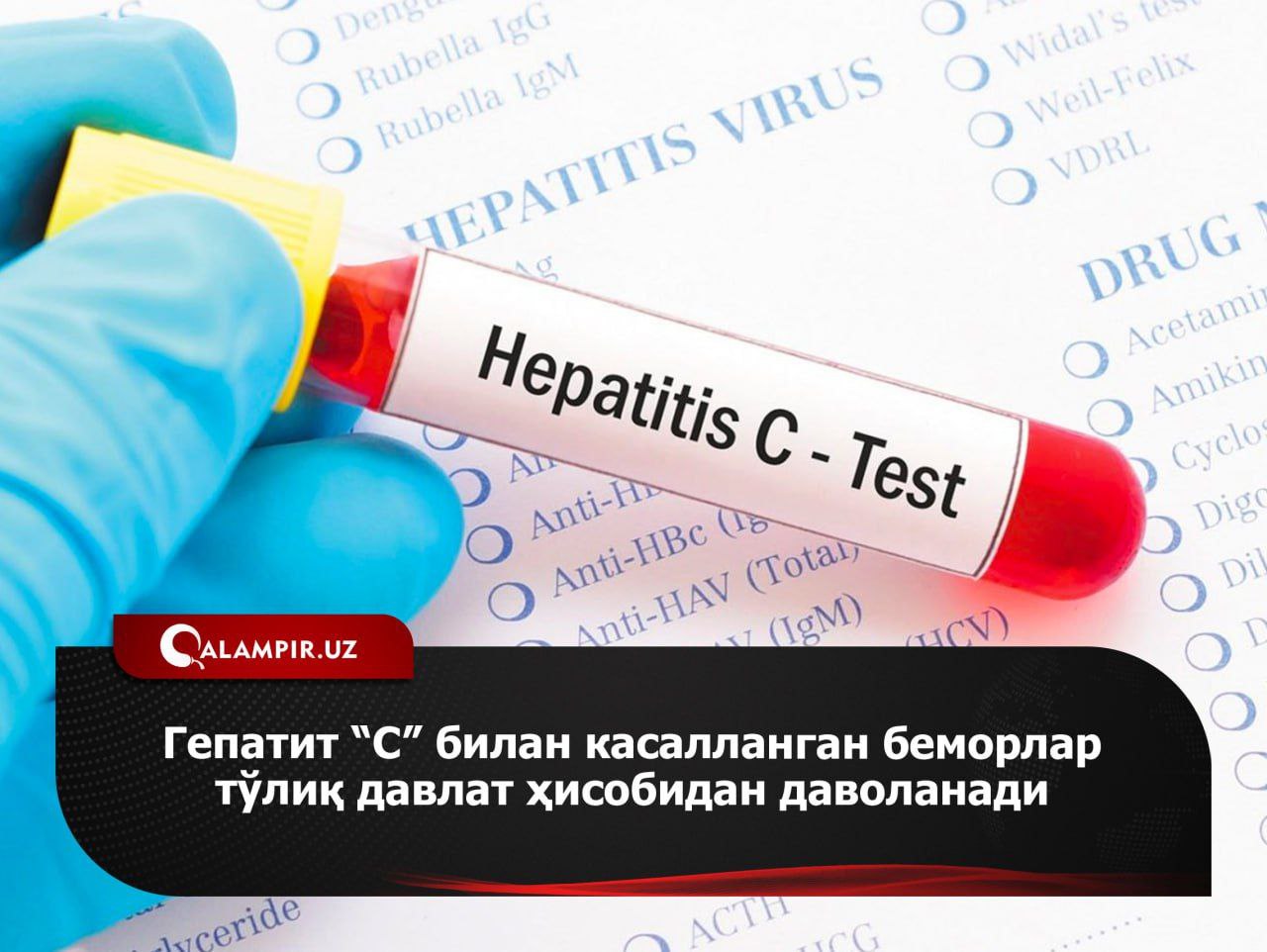
Hepatitis C patients are treated entirely at government expense.
Source: https://qalampir.uz/n/89869
The health of the population is always in the spotlight
Source: @zamon_lavhalar